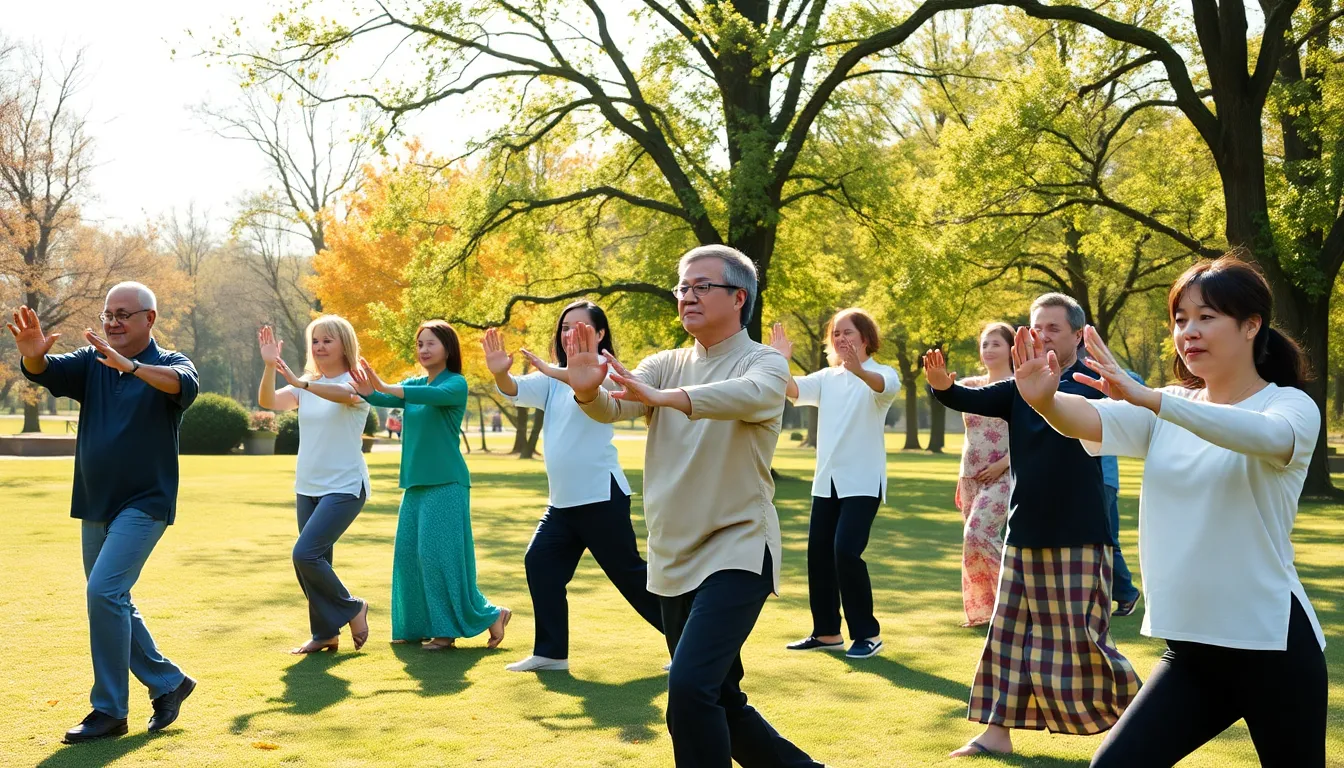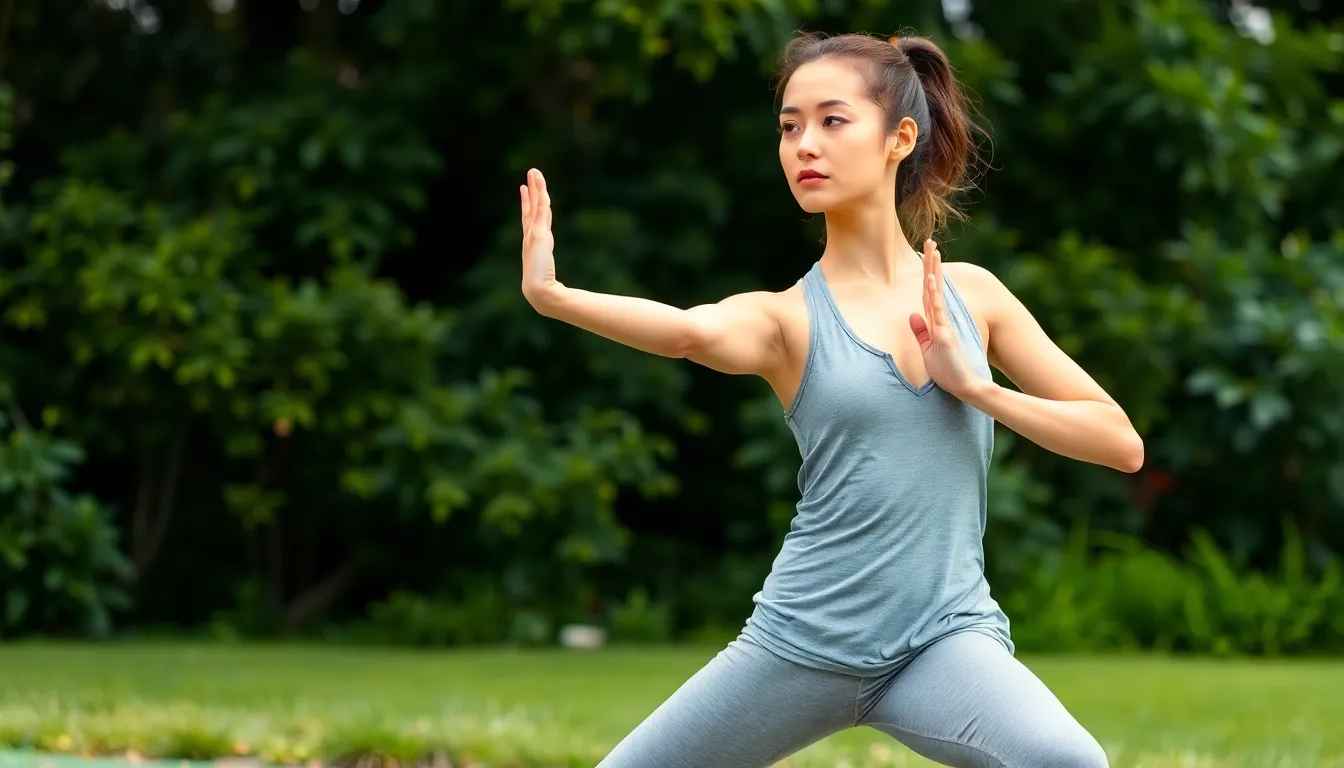In a fast-paced world, the concept of slow fitness movements is gaining traction. This approach emphasizes mindfulness and intentionality in physical activity, inviting individuals to reconnect with their bodies and the present moment. Instead of rushing through workouts, slow fitness encourages a focus on quality over quantity, promoting deeper engagement and awareness during each movement.
Practices like yoga, tai chi, and Pilates exemplify this trend, offering numerous benefits beyond mere physical fitness. They enhance flexibility, build strength, and foster mental clarity. As more people seek holistic wellness solutions, slow fitness movements provide a refreshing alternative to traditional high-intensity workouts, making it easier to cultivate a sustainable and enjoyable fitness routine.
Table of Contents
ToggleOverview of Slow Fitness Movements
Slow fitness movements emphasize mindfulness and intentionality in physical activity. They promote a deeper connection with the body, focusing on the quality of movements rather than the volume of repetitions. This approach encourages individuals to be fully present during workouts.
Practices include yoga, tai chi, and Pilates, each offering distinct benefits.
- Yoga: Enhances flexibility, strength, and mental clarity through controlled postures and breath.
- Tai Chi: Improves balance and coordination, advocating for slow, flowing movements that promote relaxation.
- Pilates: Focuses on core strength and stability, integrating breath with movement for improved alignment.
Slow fitness movements provide a holistic alternative to traditional high-intensity workouts, appealing to those seeking a sustainable and enjoyable fitness experience. The principles of patience, awareness, and deliberate practice lead to long-term physical and mental benefits, fostering a more balanced lifestyle.
Benefits of Slow Fitness Movements

Slow fitness movements offer several advantages, enhancing overall well-being through mindful practices. Practitioners experience improved physical and mental health by focusing on intentionality during workouts.
Improved Mind-Body Connection
Improved mind-body connection emerges from the deliberate pace of slow fitness practices. Participants cultivate awareness of body signals and emotions, leading to greater mindfulness. Studies indicate that this heightened awareness can reduce stress and promote relaxation. Engaging in activities like yoga and tai chi allows practitioners to tune into their body’s needs, fostering resilience and emotional balance.
Enhanced Muscle Engagement
Enhanced muscle engagement occurs as slow movements necessitate greater muscle control and focus. This approach targets specific muscle groups, promoting strength and stability. Research shows that controlled motions activate more muscle fibers than fast-paced routines, contributing to improved overall strength. Additionally, slow fitness encourages proper alignment and form, reducing muscle imbalances and promoting efficient movement patterns.
Reduced Risk of Injury
Reduced risk of injury represents a significant benefit of slow fitness movements. By emphasizing proper technique and gradual progression, practitioners minimize the chances of overuse and strain. According to health experts, slower workouts allow individuals to recognize their limits and modify movements accordingly, leading to safer exercise routines. This makes slow fitness a practical choice for beginners and those recovering from injuries, enabling long-term participation in physical activity.
Popular Slow Fitness Movements Techniques
Slow fitness movements encompass various practices that emphasize mindfulness and intentionality. Among these are tai chi, yoga, and Pilates, each offering unique techniques and benefits.
Tai Chi
Tai chi is an ancient Chinese martial art known for its slow, flowing movements. Practitioners experience enhanced balance and coordination as they focus on deliberate postures and controlled transitions. Research indicates that tai chi improves flexibility, reduces stress, and promotes mental clarity. Regular practice fosters better awareness of body mechanics, which aids in injury prevention and overall physical stability.
Yoga
Yoga integrates physical postures, breathing exercises, and meditation techniques to enhance flexibility, strength, and mindfulness. Various styles, such as Hatha, Vinyasa, and Yin yoga, cater to different needs and preferences. Studies show that yoga improves mental health, reduces anxiety, and increases body awareness. It encourages practitioners to connect with their breath and body, promoting relaxation and stress relief while improving physical vitality and mobility.
Pilates
Pilates focuses on core strength, stability, and overall body alignment. It utilizes controlled movements, often performed on specialized equipment, to engage deep abdominal muscles. This method enhances core strength and flexibility, contributing to better posture and functional movement. Research supports Pilates’ effectiveness in rehabilitation and injury prevention, making it suitable for beginners and experienced individuals alike. Additionally, breathing techniques incorporated in Pilates enhance concentration and facilitate the mind-body connection.
Incorporating Slow Fitness Movements into Your Routine
Incorporating slow fitness movements into a daily routine enhances both physical abilities and mental well-being. Practitioners can seamlessly integrate these techniques into various aspects of their lives for optimal benefits.
Choosing the Right Techniques
Choosing the right techniques requires an understanding of personal fitness goals and preferences.
- Yoga offers diverse styles, such as Hatha for beginners and Vinyasa for those seeking a more dynamic flow.
- Tai Chi focuses on fluid transitions through poses, ideal for improving balance and mindful awareness.
- Pilates emphasizes core strength through controlled movements, beneficial for enhancing posture and rehabilitation.
Assessing individual needs ensures the selected practice aligns with personal fitness aims, fostering long-term motivation.
Creating a Balanced Schedule
Creating a balanced schedule involves incorporating slow fitness movements throughout the week.
- Plan three sessions of yoga to enhance flexibility and reduce stress.
- Integrate two Tai Chi sessions focused on balance and coordination.
- Allocate two Pilates classes to reinforce core strength.
Prioritizing consistency over intensity builds a sustainable routine that nurtures physical and mental health. Each session can range from 30 to 60 minutes, allowing practitioners flexibility while encouraging regular engagement in these slow fitness practices.
Slow fitness movements offer a refreshing approach to physical activity that prioritizes mindfulness and intentionality. By focusing on quality over quantity practitioners can cultivate a deeper connection with their bodies while enhancing overall well-being. This shift encourages a more sustainable fitness journey that emphasizes long-term health benefits rather than quick results.
As individuals explore practices like yoga, tai chi, and Pilates they’ll discover unique advantages tailored to their needs. The emphasis on patience and awareness not only reduces the risk of injury but also fosters a more enjoyable exercise experience. Integrating these movements into daily routines can lead to lasting improvements in both physical and mental health, making slow fitness a valuable addition to anyone’s lifestyle.


